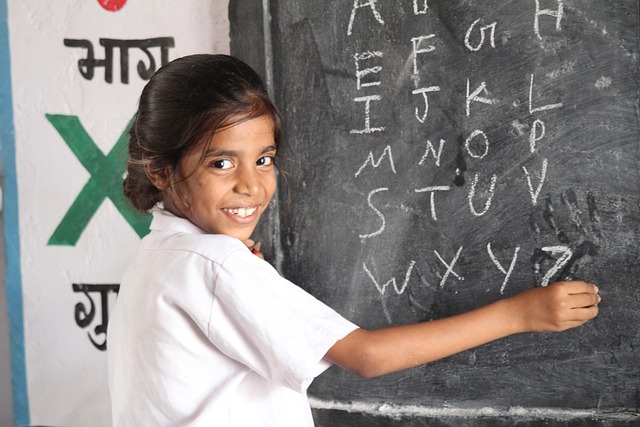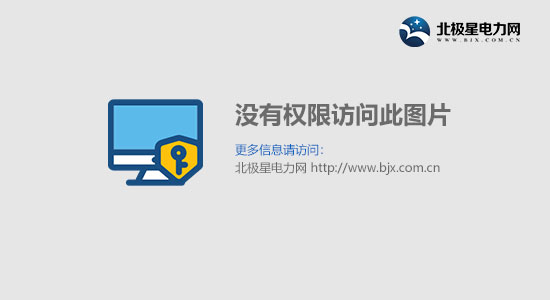上海市宝山区2024届高三上学期期末质量监测英语试卷(文档版,含答案)

Ⅰ. Listening Comprehension
Section A
Short Conversations
Directions: In Section A, you will hear ten short conversations between two speakers. At the end of each conversation, a question will be asked about what was said. The conversations and the questions will be spoken only once. After you hear a conversation and the question about it, read the four possible answers on your paper, and decide which one is the best answer to the question you have heard.
1. A. At home.
B. On a bus.
C. In a taxi.
D. On a plane.
2. A. A journalist.
B. An official.
C. An engineer.
D. A cashier.
3. A.15 minutes.
B. 90 minutes.
C.120 minutes.
D. 105 minutes.
4. A. Policeman and driver.
B. Teacher and student.
C. Boss and clerk.
D. Doctor and nurse.
5. A. The man isn’t sure whether he’ll go to the party.
B. The man just returned from a visit to the Andersons.
C. The man may not be able to give the woman a ride.
D. The man will get his car back on Friday.
6. A. He hasn’t had a chance to meet Kathy yet.
B. Kathy had already told him the news.
C. He didn’t know that Kathy was being moved.
D. His new office will be located in New York.
7. A. The style is more important than the color.
B. The green dress doesn’t fit as well as the blue one.
C. The woman should buy a dress instead of a suit.
D. The woman looks better in blue.
8. A. Few students meet Professor Johnson’s requirements.
B. Few students understand Professor Johnson’s lecture.
C. Many students have dropped Professor Johnson’s class.
D. Many students find Professor Johnson’s lecture boring.
Section B Passages
Directions: In Section B, you will hear two short passages, and you will be asked three questions on each of the passages. The passages will be read twice, but the questions will be spoken only once. When you hear a question, read the four possible answers on your paper and decide which one would be the best answer to the question you have heard.
Questions 11 through 13 are based on the following passage.
11.
A. A New York tour guide.
B. A computer expert.
C. A film maker.
D. A teacher.
12.
A. A science fiction cartoon.
B. A scientific program.
C. A movie on medical development.
D. A dream about New York City.
13. A. To explain how the brain works.
B. To show the latest type of computers.
C. To increase membership in medical societies.
D. To raise funds for public television programming.
Questions 14 through 16 are based on the following passage.
14.
A. Providing convenience.
B. Selling their products.
C. Informing the public of available services.
D. Telling the consumer about their products.
15.
A. Think carefully.
B. Think quickly.
C. Do not consider economy.
D. Think little of convenience.
16.
A. Spend your money more wisely.
B. Buy things more like a film star does.
C. Become a more emotional consumer.
D. Be able to get cheaper things.
Section C
Longer Conversations
Directions: In Section C, you will hear two longer conversations. The conversations will be read twice. After you hear each conversation, you are required to fill in the numbered blanks with the information you have heard. Write your answers on your answer sheet.
Blanks 17 through 20 are based on the following conversation.
Complete the form. Write ONE WORD for each answer.
The woman’s major __17__.
Her ideas on language learning Hard but __18__.
Something different from her country Its __19__.
The place she works at
In a company doing __20__ with the people there.
Blanks 21 through 24 are based on the following conversation.
Complete the form. Write NO MORE THAN THREE WORDS for each answer.
Experience of going through Customs
What is the man? A __21__.
What is the woman going to do first? Attend __22__.
How long will the woman stay in the country? __23__.
What does the man ask the woman to do? Show her passport, answer some questions and __24__.
II. Grammar and Vocabulary
Section A
Directions: After reading the passages below, fill in the blanks to make the passages coherent and grammatically correct. For the blanks with a given word, fill in each blank with the proper form of the given word; for the other blanks,爑se one word that best fits each blank.
( A )
One day Gene and Hannah Bortnick heard piano music (25) ______ (come) from their living room. They thought their 3-year-old son Ethan (26) ______ (listen) to a CD. Then they walked into
the room. To their amazement, they found him playing music on his toy piano!
Having discovered his remarkable talent, Ethan’s parents changed their minds and agreed to his previous begging for piano lessons. They turned to a family member who taught piano, and she began working with Ethan. It wasn’t long, however, (27) ______ the teacher knew that he was no ordinary student. Ethan was a piano prodigy (神童) and needed someone who understood his special talents and abilities. The family found Dr. Irena Kofman, (28) ______ immediately recognized his talent and intelligence.
With Dr. Kofman’s help, Ethan learned about piano technique and different types of music. Before long, he was being asked to perform for many events. Later he was receiving invitations from the likes of Jay Leno and Oprah. Ethan was 6 and in kindergarten (29) ______ he first appeared on The Tonight Show with Jay Leno. At that time, he already had over 200 songs
(30) ______ (memorize) and was developing a CD.
Today, at the age of 13, it seems there is (31) ______ Ethan cannot do. He plays piano, sings, composes songs and acts. He has entertained audiences around the world with music (32) ______ (range) from Beethoven to Bieber.
In 2010, Ethan became (33) ______ (young) musician to create and host his own TV concert special.
Then in 2024, the performer starred in and wrote music for the movie Anything is Possible.
( B )
Tasui is a teenager who lives in Africa. When he was young, he had polio (小儿麻痹症). Although he wants to go to school, he must work.
Tasui is only one of millions of children who can’t go to school. Many (34) ______ work to support their families. Therefore, more than 100 million children will never receive an education. Can anything be done? Global Campaign for Education (GCE) thinks so. It was formed to solve this problem. The government aims to give every person, especially those in poverty, (35) ______ opportunity to get an education.
Established in 1999, GCE is made up of 120 organizations with members in almost 100 countries. Education is a basic human right, and GCE campaigns to realize this right. It works with governments (36) ______ (improve) education in each country.
Today, nearly 1 (37) ______ 6 people around the world cannot read or write. Not being able to read impacts a person’s job opportunities and increases poverty. GCE seeks to provide
(38) ______ (teach) materials in primary students’ mother tongues.
Around the world, many girls face neglect and are often denied an education. GCE aims to give women the same opportunities as men.
Every spring, GCE leads the Global Action Week. During this week, GCE highlights people who (39) ______ (deny) educational opportunities. This year the Global Action Week focuses on providing an education to disabled people.
GCE believes (40) ______ quality education can change lives.
Section B
Directions: Complete the following passage by using the words in the box. Each word can only be used once. Note that there is one word more than you need.
A. studies
B. reaching
C. familiar
D. folded
E. complications
F. monitors
G. probably
H. helpful
I. exploring
J. discussions
K. particularly
Google Inc. is searching for a better way for millions of diabetics (糖尿病患者) to manage their disease by developing a contact lens that (41) ______ glucose (葡萄糖) levels in tears.
The “smart” contact lens uses a tiny wireless chip and small glucose sensor that is
(42) ______ into two layers of soft contact lens material.
Google is in (43) ______ with the Food and Drug Administration, the company said. But the contact lenses could be years from (44) ______ the public. The prototype (原型) can bring about a reading once per second, which could be very (45) ______ for diabetics who must pay close attention to their blood sugar and adjust their dose of insulin (胰岛素). Google is also (46) ______ whether the lenses could be an “early warning” for diabetics by equipping them with tiny LED lights that light up when insulin levels get too high or low.
“You’ve (47) ______ heard that diabetes is a huge and growing problem — affecting one out of every nineteen people on the planet. But you may not be (48) ______ with the daily struggle that many people with diabetes face as they try to keep their blood sugar levels under control. Uncontrolled blood sugar puts people at risk for a range of dangerous (49) ______ , some short-term and others longer-term, including damage to the eyes, kidneys and heart,” Google said in a blog post. “It’s still early days for this technology, but we’ve completed multiple clinical research (50) ______, which are helping to improve our prototype. We hope this could someday lead to a new way for people with diabetes to manage their disease.”
III. Reading Comprehension
Section A
Directions: For each blank in the following passage there are four words or phrases marked A, B, C and D. Fill in each blank with the word or phrase that best fits the context.
Residents of urban areas often make use of public transportation on their way to school or the office. But when their final __51__ isn’t near a bus stop or subway station, those folks have a problem. Transportation experts often __52__ to this as the “last mile” problem — finding a way to close the gap between public transportation stops and one’s destination.
With the last mile problem in mind, the makers of the URB-E __53__ a compact electric vehicle that weighs around 13 kilograms. Unlike bikes, which often don’t fit on crowded buses or trains, the URB-E collapses into a form __54__ to carry-on luggage. And since the URB-E can be carried __55__ anywhere, it’s not as vulnerable(易受攻击的) to thieves as bikes are.
Depending on usage, the URB-E can travel for 32 kilometers on a single __56__, reaching a top speed of 24 kilometers per hour. Although there are other vehicles attempting to __57__ the last mile issue, the URB-E __58__ for its ease of use, portability and affordable price. For the price of a nice laptop, you could have an URB-E to drive to the office.
The URB-E is made from aircraft-grade aluminum and comes in two basic models: the URB-E Commuter and the URB-E GP. The main __59__ between the two is that the Commuter model has two rear wheels while the GP has only one. That means the Commuter offers greater stability, as __60__ to the GP’s ability to make sharper turns like a bicycle.
Both models come with accessories(配件) __61__ LED front and rear lights and a shock-absorbing seat. They also __62__ a smartphone holder and USB charging port right on the steering column. In fact, smartphones play a big role in the URB-E app to do things like monitor battery charge or control the lights. __63__ accessories include a cup holder and a folding luggage shelf.
At this year’s international Consumer Electronic Show (CES) in Las Vegas, tech website The Verge awarded the URB-E with its “Best Personal Transportation” award. Singing the URB-E’s __64__, Verge editor Ben Popper said, “The URB-E felt like the kind of vehicle an enlightened citizen of 2030 would own.” So why wait that long, when the URB-E is __65__ for order now?
A. purpose
B. destination
C. transportation
D. vehicle
A. refer
B. accustom
C. attach
D. stick
A. discovered
B. introduced
C. designed
D. manufactured
A. convenient
B. efficient
C. objective
D. similar
A. constantly
B. eventually
C. mainly
D. practically
A. charge
B. tourism
C. competition
D. distance
A. cover
B. develop
C. address
D. conquer
A. breaks away
B. stands out
C. invests in
D. perseveres in
A. difference
B. characteristic
C. shortcoming
D. advantage
A. familiar
B. strange
C. important
D. opposed
A.as a result of
B. such as
C. in all
D. in addition to
A. install
B. explore
C. feature
D. equip
A. Optional
B. Critical
C. Essential
D. Unique
A. influences
B. contributions
C. praises
D. achievements
A. accessible
B. flexible
C. fascinating
D. available
Section B
Directions: Read the following three passages. Each passage is followed by several questions or unfinished statements. For each of them there are four choices marked A, B, C and D. Choose the one that fits best according to the information given in the passage you have just read.
(A)
Rugby looks like a mixture of soccer and American football. In Rugby, players carry the ball, kick the ball and tackle (拦截抢球) one another. Men, women and children play it in more than 120 countries.
Legend says rugby was invented in 1823 at a school in the town of Rugby, England. One of the school’s students, a young man named William Webb Ellis, was playing in a soccer match. But he got bored with just kicking the ball, so he picked it up and ran with it. Before long, this new way of playing soccer became popular at the school. When the school’s students finished their studies, they moved to other parts of Britain, taking the new game, which they called rugby, with them. Before long, they and others established rugby clubs throughout Britain and in British colonies around the world.
By the 1870s, there were many rugby clubs in Britain and elsewhere, but they weren’t all playing rugby the same way. To solve this problem, representatives from twenty-two teams met and agreed on official rugby regulations. They also founded an association of rugby teams, called the Rugby Football Union (RFU).
Today,Rugby Union World Cup tournaments are held every four years. The first one occurred in 1987 with Australia and New Zealand hosting. The next World Cup will happen in 2024 and will be hosted by England. Thousands of fans will travel to attend the matches and cheer on their favorite teams. Believe it or not, not one team who’s won the Rugby World Cup has managed to win the next World Cup! But players and fans don’t mind. They just enjoy the game.









